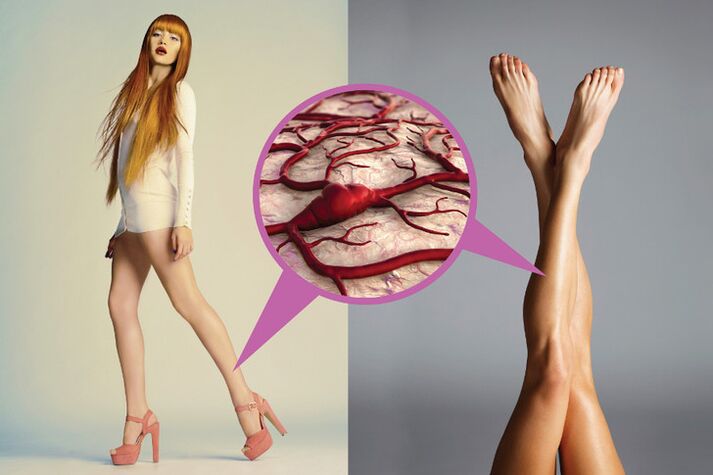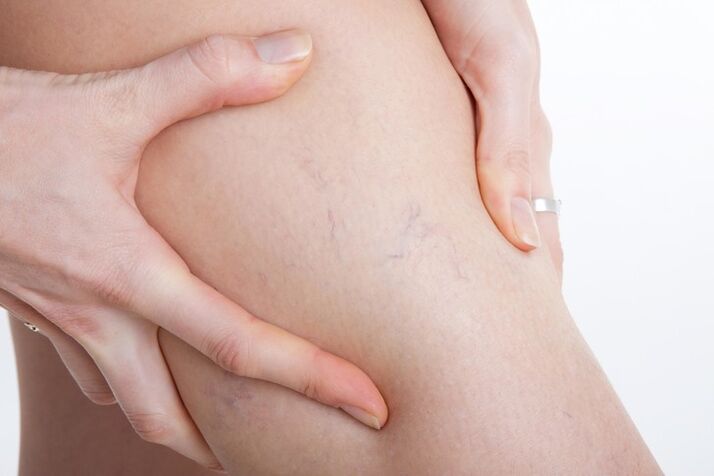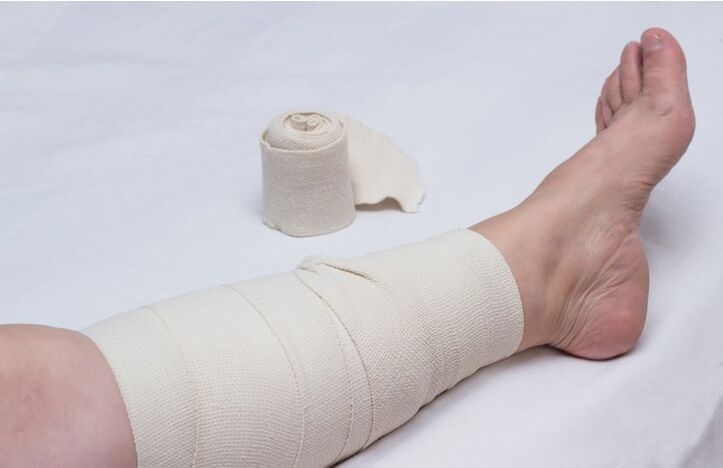Every woman wants her legs to always be in great shape. But what if one day, standing in front of a mirror, you find that your feet are covered with unsympathetic vascular "stars"? The camouflage will not work. It is impossible to ignore it, because in the future these "decorations" will only happenbrighter and larger. Fighting varicose veins in the lower extremities, although not easy, is necessary. After all, you have to agree that wearing pants is not always the most tempting prospect.

Varicose veins of the legs are a serious condition in which the veins lose their elasticity, stretch, dilate and bend.
Varicose veins in the legs have long been known as a serious disease. In general, in such a not very pleasant way we pay for the opportunity to walk on two legs. The impact of various adverse factors leads to weakness of the venous walls and blood stasis in the lower half of the body.
As a result, the vessels are overloaded and the venous valves work worse and worse. The result - the legs get tired, hurt, there is a feeling of heaviness, feet and ankles swell. Other symptoms in the form of cosmetic imperfections are added a little later. More severe complications are possible in the future.
It was previously thought that varicose veins in the legs - a disease of people of "standing" professions, and the first symptoms appear about 35 years. This is partly true. But today, varicose veins are rapidly getting younger. It can be stated that the disease has already become a problem for the 20-30-year-old "computer generation".
Unfortunately, there are no clear symptoms of approaching varicose veins in the legs. But if your legs start to hurt and get tired, there is heaviness in your legs and you suffer from convulsions - this is a reason to be alert.
And the appearance of barely noticeable bluish veins, familiar to many - vascular networks, which later, if left untreated, will become more noticeable - is a signal for action. It is worth worrying when whole clusters of subcutaneous veins have already appeared on the surface of the feet, because the outcome of the disease is ugly blood clots and ulcers, which are very difficult to fight. Treatment for varicose veins in the legs can take decades.
The most dangerous consequence of varicose veins is the development of thrombophlebitis - the formation of a blood clot in a vein.
The inflammatory process that accompanies the disease creates a risk of rupture of the vascular wall of the thrombus. And this in turn can lead to the development of pulmonary embolism, when a blood clot enters the vessels of the lungs, partially or completely disrupting the functioning of the respiratory system. And it can even lead to death.

Varicose veins in the legs: and it threatens me?
Unfortunately, it is difficult to pinpoint the exact cause of varicose veins in the legs. This disease is a consequence of various factors. And each of us encounters some of them every day.
Reason 1. Heredity
Phlebologists say varicose veins are a "familial" disease. If your mother or grandmother has suffered from this disease, then 90 percent of the 100 can be said to be at risk. Through genes, the characteristics of the structure of blood vessels are transmitted to us. And if the walls of the veins are weak, then the influence of any of the provoking factors is enough to feel the disease.
Reason 2. Pregnancy
Carrying a child is one of the most important provoking factors for the development of varicose veins, as changes in hormone levels lead to a decrease in venous tone. In addition, during pregnancy, the veins are almost always compressed by the growing uterus. In addition, the weight increases. But our veins experience the greatest pressure during childbirth. According to statistics, in 50 percent of women, the dosage of varicose veins occurs at this time.
Reason 3. Uncomfortable clothes and shoes
Uncomfortable, tight clothing, such as tight jeans, can cause varicose veins. Tight shoes and high heels are no less harmful. The wider the sole of the boots, the less the load on the feet. Balancing on thin pants, we put a huge strain on our veins. And if you also carry heavy bags of groceries in your hands, then you can say goodbye to beautiful legs forever.
Reason 4. Working conditions and bad habits
Do not forget about the people who have the classic "standing" professions (salesmen, waiters, hairdressers, flight attendants, etc. ). They have varicose veins - almost an occupational disease. They are approached by an army of office workers, as each long stay ina position (even sitting, even standing) does its dirty work, and if you add to that such bad habits as smoking, breakfast rolls and sandwiches, which leads to overweight, then varicose veins will not make you wait. This includes the love of many to sit cross-legged.
Reason 5. Sports overload
Not all fitness is good. Fans of barbell drinking in the gym are at serious risk. Lifting weights is one of the causes of varicose veins. If you have a predisposition to varicose veins, you should not overload your legs with excessive exercise. Strength training and martial arts lessons are not for you.

Diagnosis and treatment of varicose veins
As it was already clear, varicose veins of the legs are not a cosmetic defect, so with the appearance of the first unpleasant sensations in the legs you should immediately consult a phlebologist.
If necessary, the doctor may prescribe Doppler ultrasound, which will determine the quality of blood flow in the vessels and show if there are any obstacles to this, and transillumination - transillumination of superficial veins with the help of a special light that allows the specialist to easily distinguishdamaged vein from normal. These necessary measures will make it possible to identify the emerging disease in a timely manner and to take the necessary measures in a timely manner.
If we talk about the treatment of varicose veins, then modern medicine knows several ways to deal with varicose veins:
- Local remedies (ointments, gels):relieve fatigue and a feeling of heaviness in the legs, have a pleasant calming effect. This method of treatment will not bring immediate relief, as the active substance penetrates the skin in small doses. The beneficial effect is only on the superficial subcutaneous veins. However, with regular use, ointments and gels can correct the situation in the initial stage of varicose veins in the legs.
- Venotonic:medicines used for venous insufficiency (prescribed only by a doctor). These drugs help reduce swelling, relieve pain in the legs, and also strengthen the walls of blood vessels and improve blood flow. Venotonics perfectly complement the action of local remedies to achieve maximum effect in the treatment of deep veins.
- Endovasal laser coagulation (EVLK):method of treatment of "stars" and vascular "networks", precursors of varicose veins in the legs. The doctor acts on the diseased vessel with a laser and the "star" disappears. The procedure is performed under local anesthesia. After a few weeks, there are no reminders of skin manipulation.
- Sclerotherapy:a procedure in which substances - sclerosants - are injected into a problem vein with a syringe and the affected vein appears to stick together from the inside and stop working, and blood begins to flow through healthy veins. But this procedure is not suitable for everyone. Prescribed if the nodes are not very large.
- Ozone therapy:a new method of treating varicose veins that is used to remove spider veins. Ozone is injected with a small needle directly into the lumen of the vessel and causes it to stick together. Several procedures are sufficient to achieve a visible effect.
- Phlebectomy:Surgical intervention, when the diseased vein is removed, is one of the most effective methods of treatment. The day after the operation you can go home, but for at least another month you have to wear special tights or bandage your legs. During the operation, small punctures are made in the legs, which after a while are almost invisible.
It is widely believed that hirudotherapy or treatment of varicose veins with leeches helps to get rid of varicose veins in the legs. In fact, the substance secreted by leeches when bitten, hirudin, helps reduce blood clotting. Neither the spider veins nor the veins disappear anywhere. In addition, ulcers can form at the site of the bite, which are then difficult to treat.
Prevention is the best treatment for varicose veins: 5 steps to venous health
A healthy lifestyle is the best way to get rid of varicose veins and many other diseases!
Step 1. Movement is life
Swimming is a universal type of physical activity, practically devoid of contraindications. Water treatments are best suited for the prevention of varicose veins, as they well tone blood vessels. Walking is also a good way to fight venous disease. For example, up an escalator or stairs. No heavy bags, please. It is better to walk two stops to the subway than to go by transport. And at home you can do the most basic exercise "bike" in a supine position.
Step 2. Elegant helpers
Modern compression knitwear: knee-high and tights will help against fatigue and heaviness in the legs. They are sold in pharmacies and are selected strictly individually by the doctor based on the parameters of the legs. In appearance, medical tights are no less beautiful and modern than ordinary ones. In addition, they help the vessels to cope better with the increased load.
Step 3. Tasty and healthy
First, being overweight puts a serious strain on blood vessels. So, if you have a few unnecessary pounds, then it is better to get rid of them. Second, nutrition to prevent varicose veins should be aimed at strengthening the walls of blood vessels. This is facilitated by vitamins such as ascorbic acid and rutin, found in sea buckthorn, raspberries, citrus fruits, chokeberries, strawberries, rose hips and mountain ash. And ordinary buckwheat is rich in the natural antioxidant quercetin, which not only strengthens blood vessels, but also has anti-cancer properties.
Step 4. Beauty without sacrifices
Comfortable shoes with heels no higher than 4 centimeters are the best choice for every day. In high-heeled shoes, the foot is in a forced bent state, as a result of which the nutrition of the small vessels of the toes is disturbed, venous congestion, swelling of the ankles and calves occur.
Step 5. Care and maintenance
To prevent varicose veins in the legs, it is useful to rinse your feet with cold water after a shower. You can do the massage yourself: stroking movements from the bottom up from the foot to the groin. Overheating is dangerous for the veins, therefore, if there is a predisposition to varicose veins in the legs, it is better to exclude the bath and sauna from your life. And don't overdo it with sunbathing either. Ultraviolet light reduces the elasticity of tissues and venous walls and leads to varicose veins. You can sunbathe, but not at noon, but until 11 am and after 5 pm.
Yes, varicose veins in the legs are a chronic condition. However, timely prevention of varicose veins will help prevent the onset of the disease and reduce the risk of developing possible complications.























